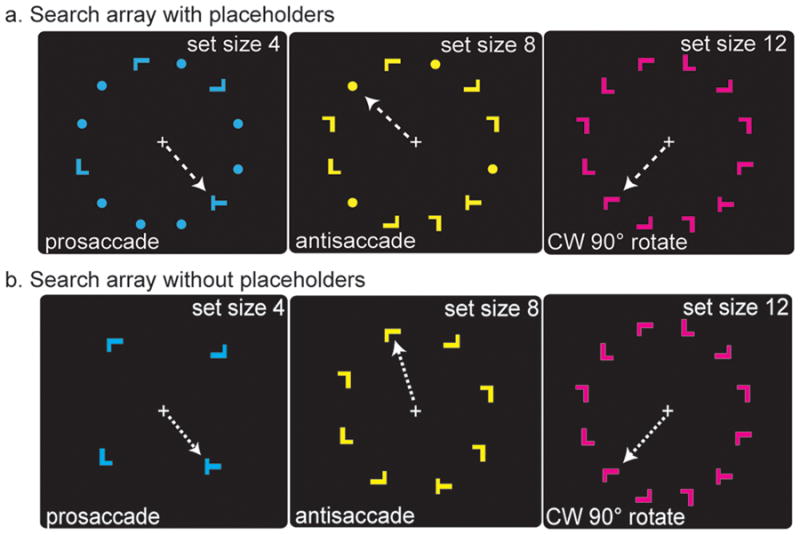Figure 1.

Visuomotor search task, example trials. Subjects fixated a white cross during a variable intertrial interval (3~11 sec) that served as a baseline. Upon presentation of the search array, subjects covertly searched for the letter “T” among letter “L” distractors. The left, middle, and right panels show examples of trials in which there were 4, 8, and 12 item search arrays. The left, middle, and right panels show examples of trials in which subjects looked towards the target (prosaccade), away from the target (antisaccade), or rotated 90° clockwise from the target. The color of the search array indicated which saccade transformation to apply. Although the color-transformation assignment was counterbalanced across subjects, in this example, cyan, yellow, and magenta instructed a prosaccade, antisaccade, or rotation saccade, respectively (indicated by the white dotted arrow, invisible to subjects). Two versions of the task are depicted, one with placeholders that equate the amount of retinal stimulation (a) as used in Ikkai et al. (in press), and one without placeholders (b) used in the present study.
